
Search Wild Foods Home Garden & Nature's Restaurant Websites:
Barberries
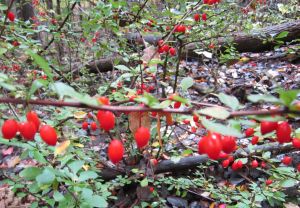
(NOTE: If you are not interested in growing Barberries, but just finding the berries and using them, try going to the Nature's Restaurant Online site. Barberries.)
Barberries Berberis.
To start, I have two warnings about Barberry shrubs. First, they have thorns. Very sharp, tough thorns that can do damage. The second issue with them is they harbour and attract the Black-legged ticks (Ixodes scapularis) which carry Lyme disease. So, your chances of getting a tick on you, and therefore getting Lyme disease is greatly increased by having contact with these bushes.
The Japanese, and the European Barberry shrub are very commonly used landscaping shrubs, so you would have no trouble finding one or the other at nurseries, they are very beautiful and the fruit can be plentiful and good tasting when used right. But, due to the tick issue mentioned above, and the fact they are now considered and invasive species in many areas of Eastern North America, you may want to think twice about planting them. If you live near where there is wheat farming, be aware that the European Barberry is an alternate host of the fungus known as "Wheat Rust", so you don't want that one in Wheat country. The Japanese Barberry is not an alternate host for the Wheat Rust, so it is safe in areas where Wheat is grown.
Soil & Site: It grows in a wide variety of soils, moisture conditions, is hardy and produces a lot of the small berries that make good food. It likes full sun, but can take some shading.
Companion Planting Note: Barberry shrubs turn the soil more alkaline where they grow. If you have acidic soils, and you want to grow neutral to alkaline soil loving plants, Barberries make a good companion. Keep them low to stop from shading too much. A row of Barberry shrubs planted on the north side of a row of alkaline soil needing plants makes the soil more alkaline, protects from cold northern winds, and provides food.
Planting: Best done in early spring or late fall, but you can also do this after they have flowered. As usual, dig the hole bigger than the root ball being planted and mix in organic matter to help the soil hold moisture. You don't need to mix in fertilizer or composted manure - these plants do well on minimal feeding, but a little bit of composted manure or garden compost won't hurt either, especially if you want it to grow fast at first. After planting, mulch around them well and don't let them dry out for the first season. After that, they should be fine on their own.
Maintenance: There isn't a lot to do with these. Generally you don't need to fertilize. The Japanese Barberry does respond well to nitrogen, and will grow faster when given it, such as spreading composted manure or fertilizer pellets around the base. If you are trying to get it to grow into a hedge quickly, then do this. But once it is the size you want, stop feeding it, or you will have to trim it constantly. Regular additions of some mulch around them is good for preventing summer drought damage. Pruning is not necessary unless you are training them to a shape, and they take well to that. Make sure you wear tough gloves or you will get quite scratched up. You can lightly shape and cut back new growth during the growing season to keep the shape you want. If you are doing heavy pruning to reduce size, this is best done in early spring after the chance of very cold temperatures has passed.
Harvesting: A great thing about this shrub is the berries can be gathered starting in the fall, through the winter and right into spring. The fruit stays on the bushes, and doesn't rot. This is a nice change, as most fruit and berries requires very precise harvesting times. This also allows you to harvest in the dead of winter when the ticks are not going to leap on you.
Using: All three I've listed have edible berries that are very sharp tasting when fresh (Vitamin C packed), and can be cooked into jams and jellies, but also can be used in recipes for meals. The European Barberry is cultivated on a large scale in Iran for the berries. One of the more common uses is in meals with rice. See the recipe searches to find out more.
If you do make jams or jellies from ones you gather, you won't have to use pectin, as the berries are very high in it themselves. Making jams from Barberries is a very old English custom. They were known as pipperages. The custom mainly died out when people started eradicating the Barberry shrub when it was figured out it was an alternate host for the Wheat Rust fungus that was destroying a lot of their grain crops. The Japanese Barberry does not act as an alternate host for the rust.
Web Resources:
Recipe search on the web for Barberries from any of the three species listed below here (Google search) and here (Bing search).
American Barberry (Berberis canadensis). You can tell this one from the very similar European Barberry and from the Japanese Barberry by counting the serrations on the leaf margin. If the leaf margin is not serrated (it is smooth), it is the Japanese Barberry. If there are few serrations on the leaf edge (2-12 per side) then it is the American Barberry. If there are more than 16 serrations per side (16-30 is normal per side of each leaf) on a leaf margin, it is the European Barberry.
Description:
- USDA Plant Hardiness Zone: 5-8 (More information on hardiness zones).
- Soil pH: 5.6-7.5
- Plant Size: Up to 2 meters (6 foot, 6 inches) tall, but usually around 1 meter (3 feet), tends to colonize areas with spreading rhizomes.
- Duration: Perennial Shrub
- Leaf Shape: Ovate
- Leaf Phyllotaxis (Arrangement) on branch: Alternate
- Leaf Size: 13-40 mm (1/2 to 1 1/2 inches) long
- Leaf Margin: Serrated (saw toothed edge), thin, pointy serrations numbering about 2-12 per side of each leaf
- Leaf Notes: Leaves are thin and smooth
- Flowers: Six petalled on raceme, flower is yellow with green center (stigma), flowers in late April to May
- Fruit: Small, red, oblong fruit hanging from branches, very tart but good raw and cooked. Can be used like the commercially sold berries from the European Barberry, hangs in small clusters (1-6 normally) from branches.
- Bark: Color ranges from red to purple to green to brown on twigs, mature bark can have shreds and is grey to brown.
- Habitat: Dry, sandy soils, semi shade to full sun, common on dry hillsides where it colonizes large areas, tolerates wide range of alkalinity from acidic to alkaline. NOTE: if this bush is in an area that has the Black-legged ticks (Ixodes scapularis) which carry Lyme disease, you are advised to either avoid this shrub or wear a DEET based insect repellent on you and your clothes while picking the berries. Ticks are attracted to living in this and other Barberries, and you greatly increase your chances of contact with this tick while in contact with this shrub.
Web Resources:
- Pictures on the web here (Google images) and here (Bing images).
- Interactive USDA distribution map and plant profile here.
- The Biota of North America Program (BONAP) distribution map here. BONAP map color key here.
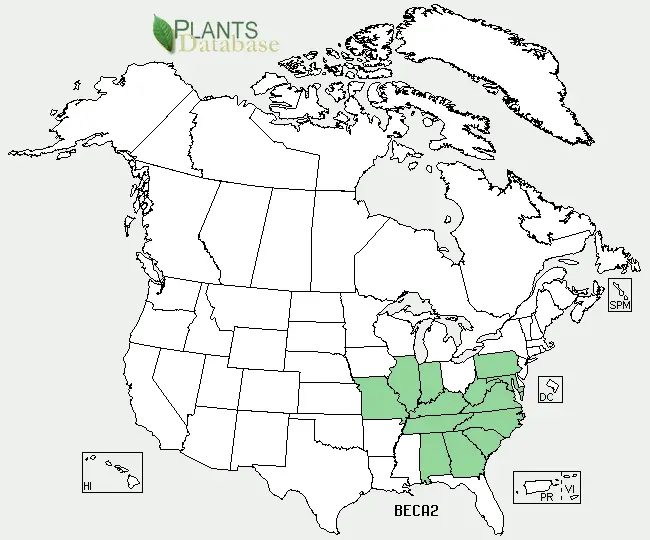
American Barberry (Berberis canadensis) range. Distribution map courtesy of U. S. Department of Agriculture (USDA Natural Resources Service) and used in accordance with their policies.
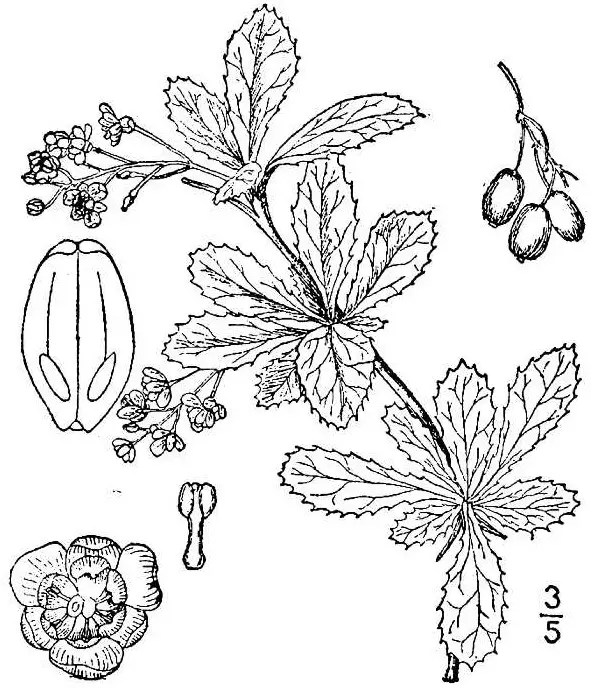
American Barberry drawing. (USDA-NRCS PLANTS Database / Britton, N.L., and A. Brown. 1913. An illustrated flora of the northern United States, Canada and the British Possessions. 3 vols. Charles Scribner's Sons, New York. Vol. 2: 127)
European Barberry (Berberis vulgaris). This is the shrub that is cultivated in Iran for the berries, which are dried and sold in stores as a common ingredient called zereshk. You should have no trouble finding the imported, dried fruit at local middle eastern food stores in larger cities. It is hard to find fresh in stores, but you can gather it yourself and enjoy the better flavor of cooking with fresh Barberries. It was used in England for making jams and jellies.
You can tell this one from the very similar American Barberry and from the Japanese Barberry by counting the serrations on the leaf margin. If the leaf margin is not serrated (it is smooth), it is the Japanese Barberry. If there are few serrations on the leaf edge (2-12 per side) then it is the American Barberry. If there are more than 16 serrations per side (16-30 is normal per side of each leaf) on a leaf margin, it is the European Barberry.
Description:
- USDA Plant Hardiness Zone: 3-7 (More information on hardiness zones).
- Soil pH: 5.0-8.0
- Plant Size: Up to 4 meters (13 feet) tall
- Duration: Perennial Shrub
- Leaf Shape: Ovate
- Leaf Phyllotaxis (Arrangement) on branch: Alternate on branch clusters of 2-5 leaves
- Leaf Size: 2–5 cm (4/5 to 2 inches) long and 1–2 cm (2/5 to 4/5 inch) wide
- Leaf Margin: Serrated (saw toothed edge) with approximately 16-30 teeth per side of leaf
- Leaf Notes: The sharp thorns come from the same spot in the branch as the leaf clusters
- Flowers: Small yellow flowers from drooping panicles in spring
- Fruit: Red, oblong, ripe in late summer to early fall, very tart, in clusters hanging from branches, 7-10 mm long and 3-5 mm wide
- Bark: Branches from green to reddish brown. Often with dark dots on lighter background. Mature bark is grey to brown. Sharp thorns.
- Habitat: Can tolerate slightly acidic soils, but prefers alkaline soils, likes dry to moist but well drained soils, full sun to part shade. Very often found in open woods areas on the side of slopes in well drained soils. NOTE: if this bush is in an area that has the Black-legged ticks (Ixodes scapularis) which carry Lyme disease, you are advised to either avoid this shrub or wear a DEET based insect repellent on you and your clothes while picking the berries. Ticks are attracted to living in this and other Barberries, and you greatly increase your chances of contact with this tick while in contact with this shrub.
Web Resources:
- Pictures on the web here (Google images) and here (Bing images).
- Interactive USDA distribution map and plant profile here.
- The Biota of North America Program (BONAP) distribution map here. BONAP map color key here.
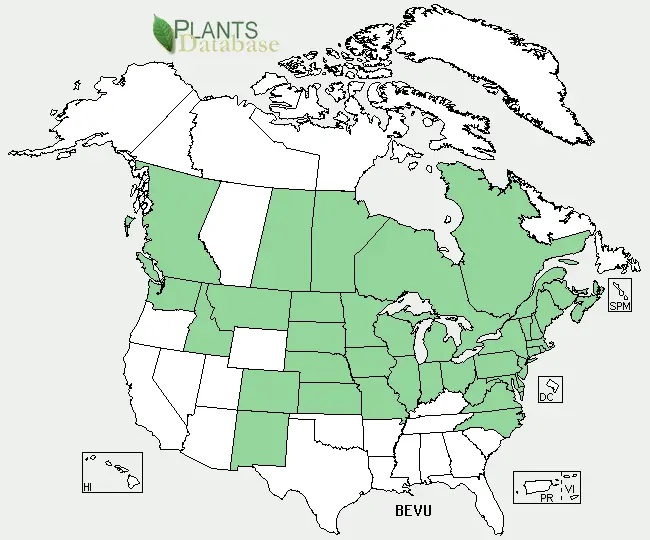
European Barberry (Berberis vulgaris) range. Distribution map courtesy of U. S. Department of Agriculture (USDA Natural Resources Service) and used in accordance with their policies.
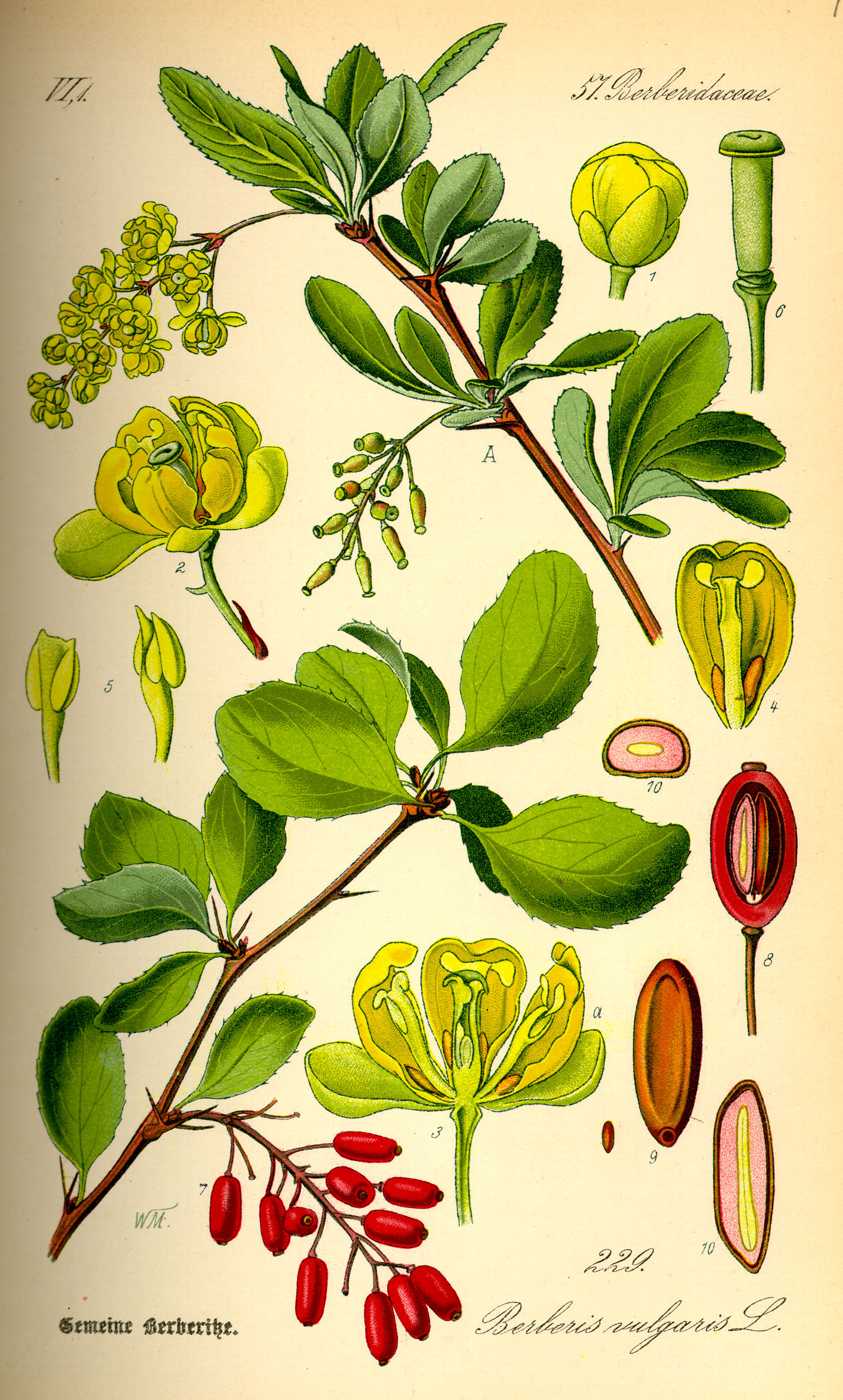
Illustration: European Barberry (Berberis vulgaris)
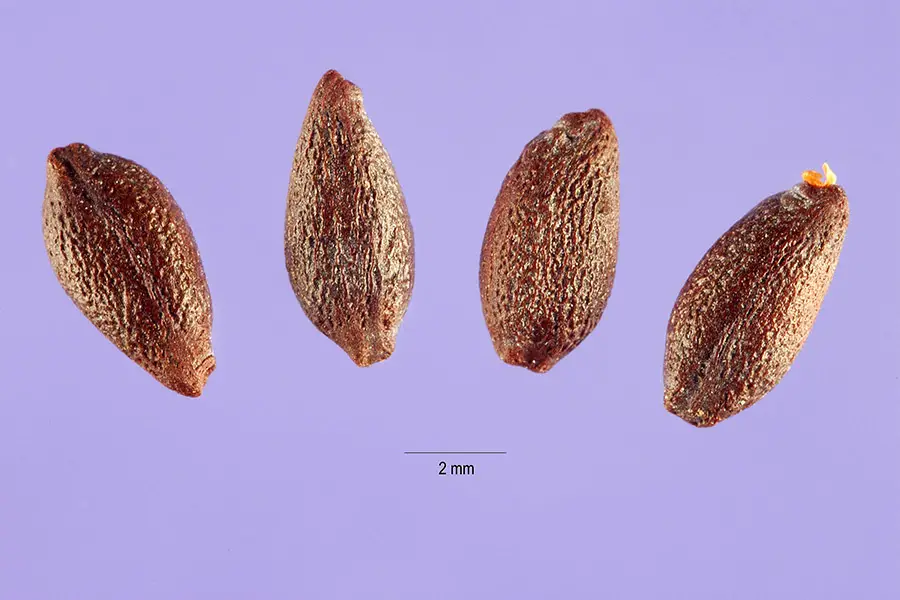
European Barberry seeds. (Steve Hurst, hosted by the USDA-NRCS PLANTS Database)
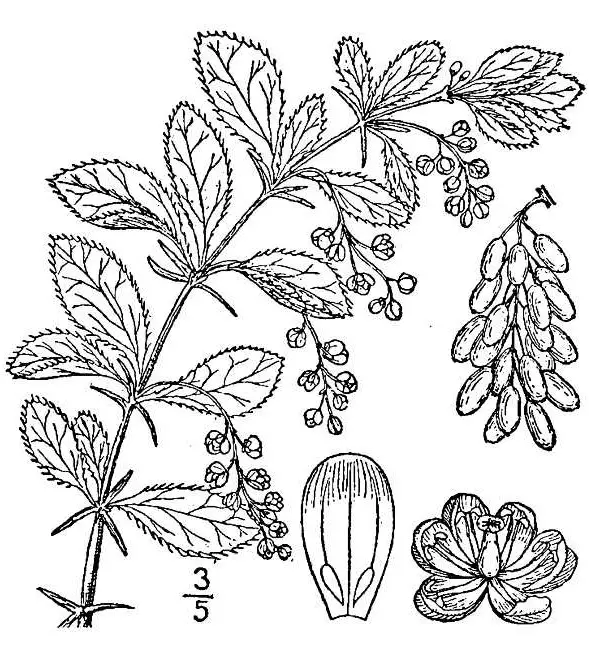
European Barberry drawing. (USDA-NRCS PLANTS Database / Britton, N.L., and A. Brown. 1913. An illustrated flora of the northern United States, Canada and the British Possessions. 3 vols. Charles Scribner's Sons, New York. Vol. 2: 127)
Japanese Barberry (Berberis thunbergii). Known also as the Red Barberry and Thunberg's Barberry. This is a very common shrub for landscaping that is used for hedges. This version of the Barberry does not act as an alternate host for the Wheat Rust fungus. It attracts and harbours the tick like the other two.
This one is easy to know from the other two Barberries. The margins of the leaves are smooth (Entire) - that is no sawtooth pattern on the edge. Both of the other two do have sawtooth margins on the leaves. Though commonly sold at nurseries, it is now becoming recognized as an invasive species, so you will find in areas where it has not been intentionally planted - edges of woods, abandoned fields and waste areas, along fence lines and under power lines in clearings. It is tolerant of many conditions. This one responds well to nitrogen in the soil, so if you want it to grow fast, fertilize it regularly, or use composted manure as mulch.
From an eating perspective, you can treat this one like the European Barberry which is cultivated for its fruit. Very common. This is the most common one you will find in parks, and as an ornamental in gardens and front yards, and property dividing hedges.
Description:
- USDA Plant Hardiness Zone: 4-9 (More information on hardiness zones).
- Soil pH: 3.7-7.5, Note: there seems to be different ranges giving from different sources. Once point of agreement is that wherever this shrub has colonized, the soil pH is raised (made more alkaline) over time
- Plant Size: Up to 2.5 meters (8 feet) tall if left to grow naturally (though most commonly found as a planted and shaped hedge)
- Duration: Perennial Shrub
- Leaf Shape: Ovate to Obovate (oval, but wider near the top of the leaf)
- Leaf Phyllotaxis (Arrangement) on branch: Alternate clusters of 2-6 simple leaves
- Leaf Size: Up to 25 mm (1 inch) long and up to 15 mm (3/5 inch) wide
- Leaf Margin: Entire (smooth edged)
- Leaf Notes: The leaf clusters are on short, fat stumps that come from the axils on the branch. Although normally with green leaves, there are cultivars that have yellowish, reddish, purplish and even variegated leaves.
- Flowers: Hanging from the branch, from leaf axils, clusters of 2-5 pale yellow flowers that are approximately 6-7 mm (1/4 inch) wide. Flowers in mid spring to early summer.
- Fruit: Starting in late summer and stays on the bush into winter, shiny bright red to orange-red, oval shaped berry with a single seed. 7–10 mm (1/4 to 1/3 inch) long and 4–7 mm (3/16 to 1/4 inch) wide
- Bark: Reddish brown branches with single to triple thorns at leaf axils with grooves and ridges that run along the branch
- Habitat: Most often seen as a planted ornamental, very frequently as a hedge. Birds eat the fruit and drop the seeds, so it appears in many places naturalized. Although it does prefer drier and neutral to slightly alkaline soils, it will adapt to almost any place except constantly wet soils. It will raise the alkalinity of any soil it grows in. It does prefer full to part sun, but it will survive as an understory tree. NOTE: if this bush is in an area that has the Black-legged ticks (Ixodes scapularis) which carry Lyme disease, you are advised to either avoid this shrub or wear a DEET based insect repellent on you and your clothes while picking the berries. Ticks are attracted to living in this and other Barberries, and you greatly increase your chances of contact with this tick while in contact with this shrub.
Web Resources:
- Pictures on the web here (Google images) and here (Bing images).
- Interactive USDA distribution map and plant profile here.
- The Biota of North America Program (BONAP) distribution map here. BONAP map color key here.
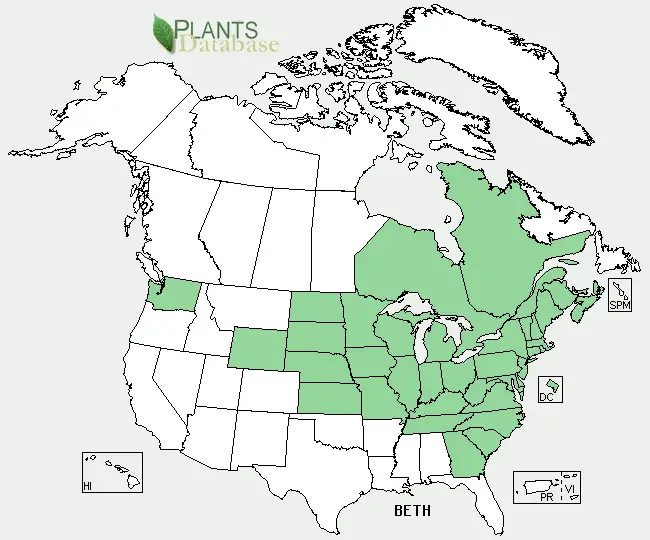
Distribution map courtesy of U. S. Department of Agriculture (USDA Natural Resources Service) and used in accordance with their policies.
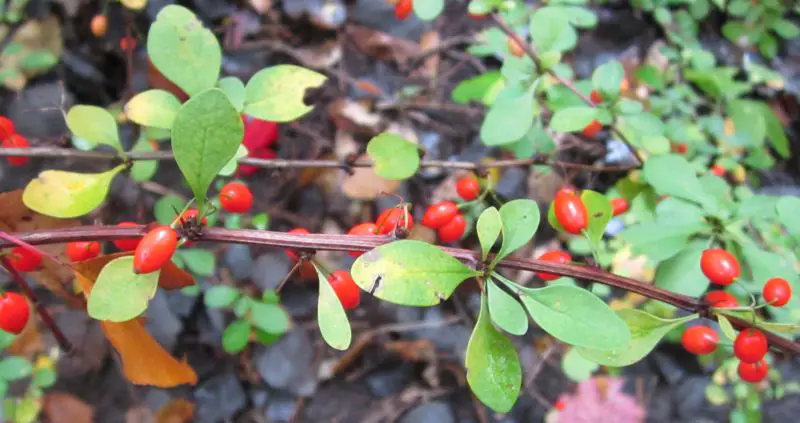
Notice how the edges of the leaves are smooth (entire). This is how you know this is the Japanese Barberry. The berries on this one are ready to be picked, but I'd wait until winter to make sure you avoid ticks.
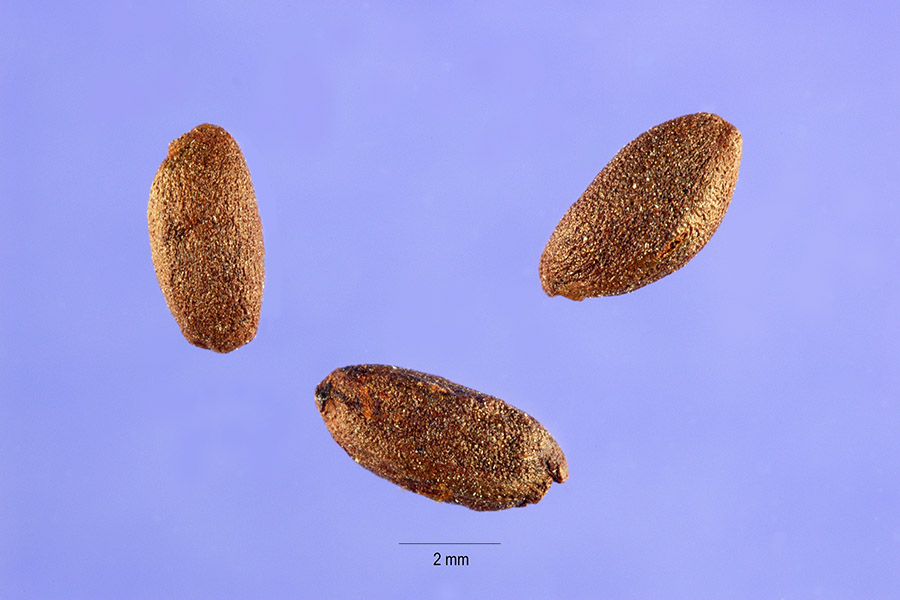
Japanese Barberry seeds. (Steve Hurst, hosted by the USDA-NRCS PLANTS Database)
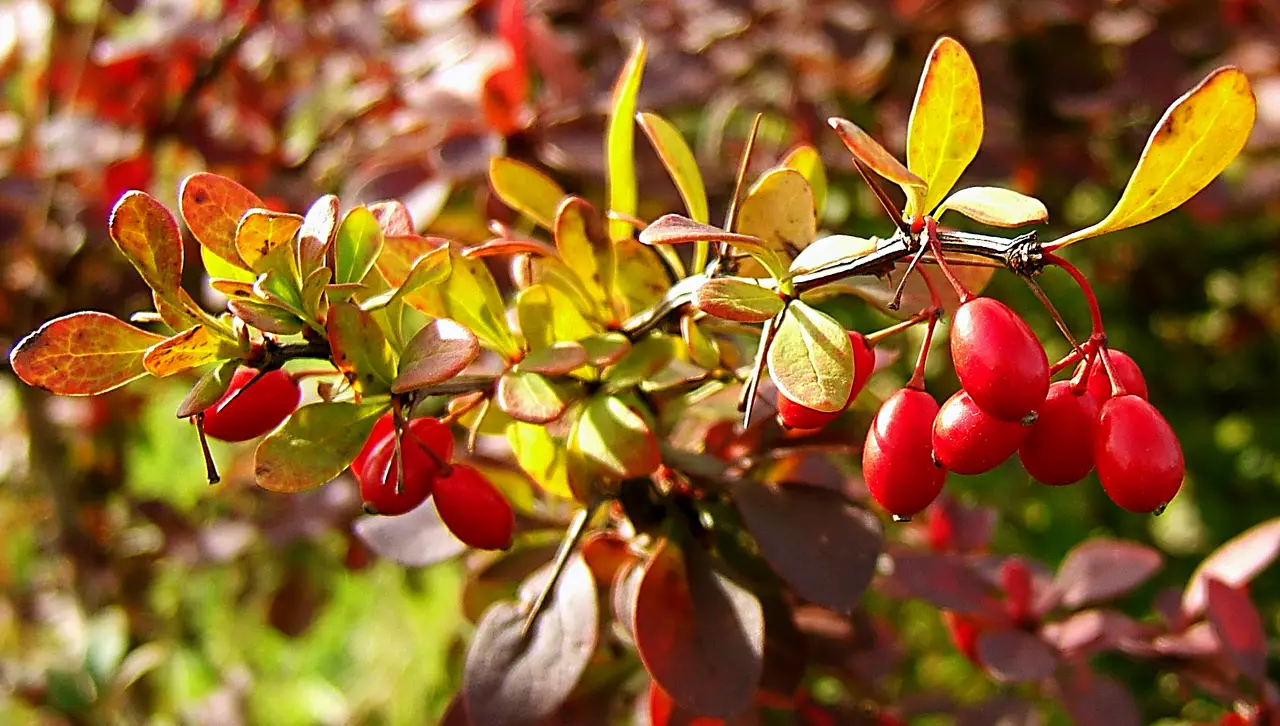
Beautiful picture of the Japanese Barberry by Wildfeuer - Eigenes Werk (CC BY 2.5)
Search Wild Foods Home Garden & Nature's Restaurant Websites:
Share:
Why does this site have ads?
Originally the content in this site was a book that was sold through Amazon worldwide. However, I wanted the information to available to everyone free of charge, so I made this website. The ads on the site help cover the cost of maintaining the site and keeping it available.
Google + profile
